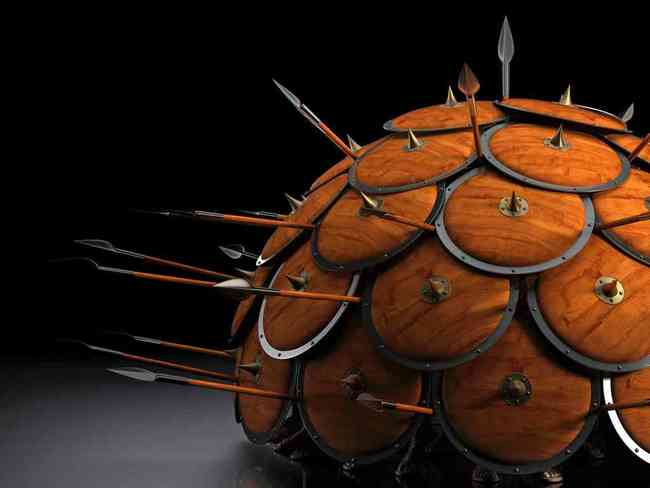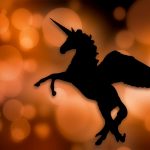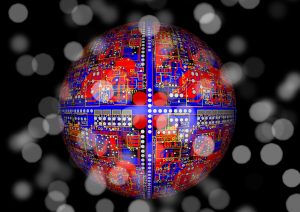SaaS: Learn to Fight Like the Dragon or Get Impaled by a Unicorn

In a prior posting, You Don’t Have to Be a Unicorn to Be a Great SaaS Company, I discussed that our SaaS company doesn’t have to be a unicorn to be worthwhile. However, we will need to protect it from getting impaled by the rare beast. In a world where software development is becoming a commodity and the typical SaaS company has a 15% churn, how do we keep the competition away?
Our business will build sustainable competitive advantage (also known as barriers to entry) and seek out ways to disrupt that of the competition. With good strategy, our company can achieve competitive advantages of that Unicorn you are hunting. a network maze, with strategically planted pain points, integrated with legal reinforcements … enter, the fire-breathing dragon.
Unicorn Barriers to Entry
The unicorn will use its size as its advantage – it is larger than our company and it has the economy of scale. Its cost of customer acquisition (CAC) is lower and so are the marginal costs.
There are many examples where a smaller, nimble firm overcame a large goliath of a competitor. They may not have put goliath out of business, but they were able to get quite fat from the opportunities goliath left on the table.
Seek out niches where alternative methods of customer acquisition are possible. By narrowing our company’s focus and becoming more specialized, we may be able to develop strategic partnerships that result in a reduced cost of customer acquisition or lower cost of operation.
Network Effects
The network effect is a different type of economy of scale. The value of the service to each existing customer increases with each new customer. Social media services are the most common example. Exchanges or clearing-houses are other good examples. This gives our firm an exponential value proposition for our customers (vs. linear).
If the SaaS business is more valuable with each new customer joining the network, the first mover can become entrenched. A competitor with a smaller network won’t be able to provide the same value as it has a smaller customer base.
A great example of a network effect are the travel websites. Imagine you owned a hotel and listed with a site with just a few hotels in the area versus a site with all the hotels in the area. It is preferable to advertise on the site with more hotels as the larger “network of hotels” are likely to draw more potential bookings.
Switching Costs
Switching costs are a great option for SaaS businesses. What pain points are there when a customer decides to leave? What pain points need to be overcome to take a customer from a competitor? Multi-year contracts with termination fees are great, but so many SaaS business prefer the easier month-to-month models.
Think about the time invested by our customer in customizing their experience, loading data, connecting apps and other SaaS products, working out the bugs? CRM and Cloud-ERP are fantastic examples of this. How much time and money was invested in setting up your CRM and Cloud-ERP? Now that you’ve been using it for a while, how much additional time is needed to migrate your precious data to another system? What would it take to get you to switch?
From the perspective of social media, how much time do people invest in their profile, building their connections, and adding supplementary material? The longer a user is with a product, the more that has been invested. This investment, be it time or money, is a sunk cost. But the user does not see it that way if it needs to be re-invested upon a change of platform.
When looking at bringing customers over from your competition, how easy is it to migrate data, upload contacts, and bring in the profile? Are you supplying software to help with these tasks? Perhaps you can give a financial incentive to offset the investment.
Highly Integrated
Create deep metadata-driven customizations and go beyond a single application or suite of applications. Produce a rapid application development platform that can become a collaboration tool or application container that can become a database provider. Complex integration compounds the pain of changing services. Data replication and migration is possible but at considerable expense, business interruption, and risk.
Strategic Partnerships
These effective partners should serve many different types of customers, even services unrelated to your SaaS company, to reinforce the value of the product for the customer while vendors share the same network effect.
Customizing your product through relationships with other apps in a particular industry creates vendor ecosystems. Other apps that attract and retain customers as well or better than yours could gain more revenue for both companies through tailored sales and services, trends in mobile computing, social networking, and big data. The vendors become entwined, predictive data is shared, and changing services get harder to justify.
Technology / Intellectual Property
Intellectual property (IP) is a barrier that is always changing. Trade secrets, patents, trademarks, industrial design, and copyright, are tools for developing business relationships and partnerships with select companies while you bar others temporarily from your market. Your IP assets can be used strategically to generate additional revenue through licensing agreements or franchising royalties, access to new technology and markets, or more research and development.
Whether you rely on one fire-breathing dragon or multi-headed hydra, these barriers to entry can lead to diversification and leverage for acquisition and growth.
Resources and Links:
All Strategy Is Local

True competitive advantages are harder to find and maintain than people realize. The odds are best in tightly drawn markets, not big, sprawling ones.
Source: Greenwald, B. and Kahn, J. 2005. hbr.org/2005/09/all-strategy-is-local
Leveraging Intellectual Property: Beyond the `Right to Exclude’

Beyond the right to exclude, this article highlights the availability of a number of other possibilities and opportunities that are available to an owner of IP assets, be they owned by enterprises, large or small.
Source: Kalanje, C. www.wipo.int/sme/en/documents/leveraging_ip_fulltext.html
How to integrate SaaS with your local business systems

As software as a service matures, CIOs need to look at how well cloud-based products integrate with existing on-premise systems
Source: Saran, C. 2013. www.computerweekly.com/feature/How-to-integrate-SaaS-with-your-local-business-systems
How do you build switching costs into your business?

I talked about whether network effects were overvalued in my last blog post. I talked a lot about the value of those network effects in increasing switching costs. Yet most of the examples I used w…
Source: Cross, P., 2015. dedatta.com/2015/01/23/how-do-you-build-switching-costs-into-your-business/
The 3 Competitive Defenses of Enduring SaaS Companies

A technology advantage isn’t enough to build an enduring enterprise SaaS company because at the core, all SaaS software share the same architecture. A relational database stores data and a web site presents the data. This is true for CRM (Salesforce), marketing automation (Marketo), email (Exchange), content management systems (Sharepoint) and so on.
Because SaaS apps use standard databases, engineers can easily transfer the data from one database to another. I’m greatly simplifying here because differences in architecture may exist, but in principle it’s simple …</p?
Source: Tonguz, T. 2013. tomtunguz.com/saas-barriers-to-entry/
How To Create Market Entry Barriers

In this article we will look at types of barriers to entry, how to create market entry barriers, and issues with market entry barriers.
Source: Martin, 2014. www.cleverism.com/create-market-entry-barriers/

 Previous Post
Previous Post Next Post
Next Post




